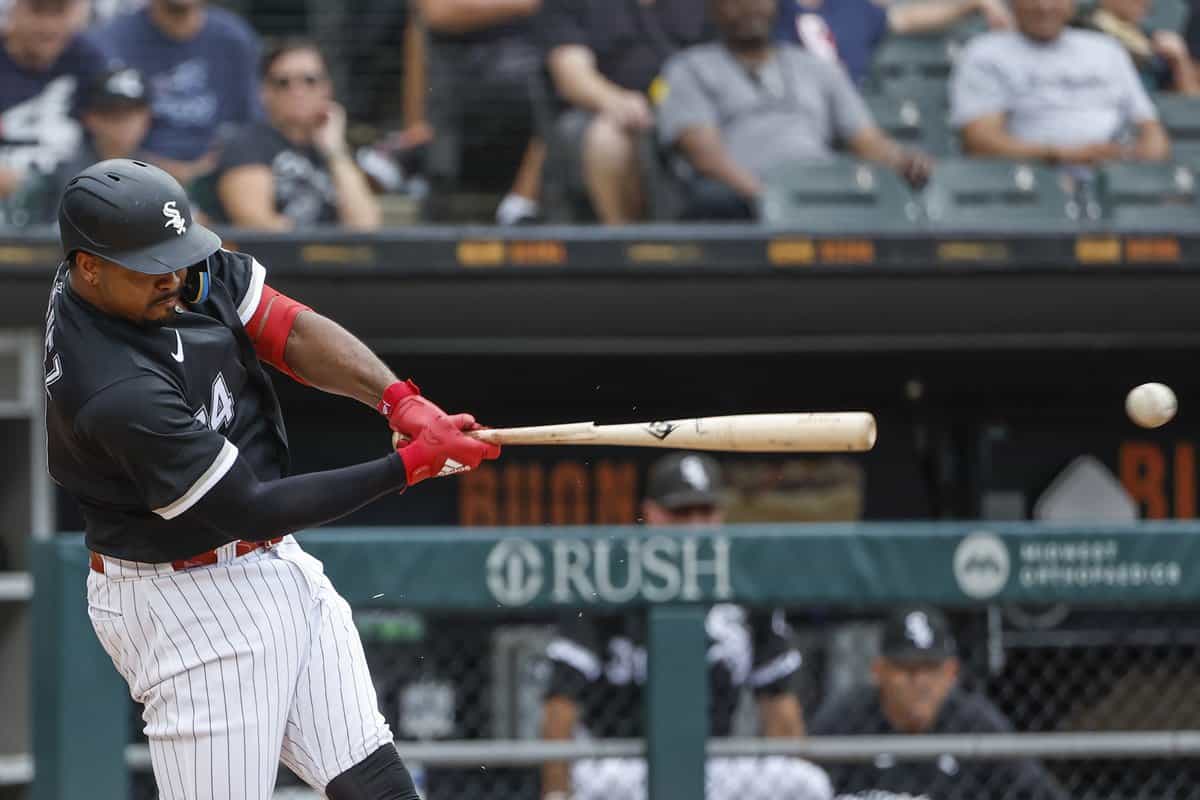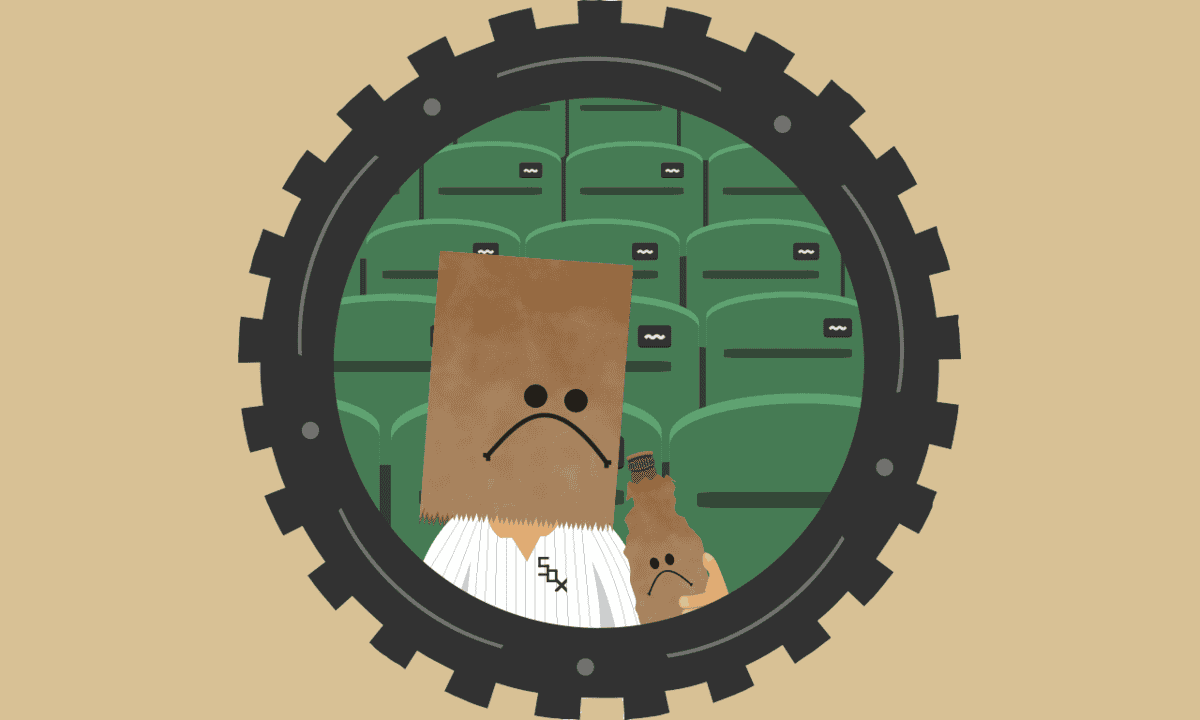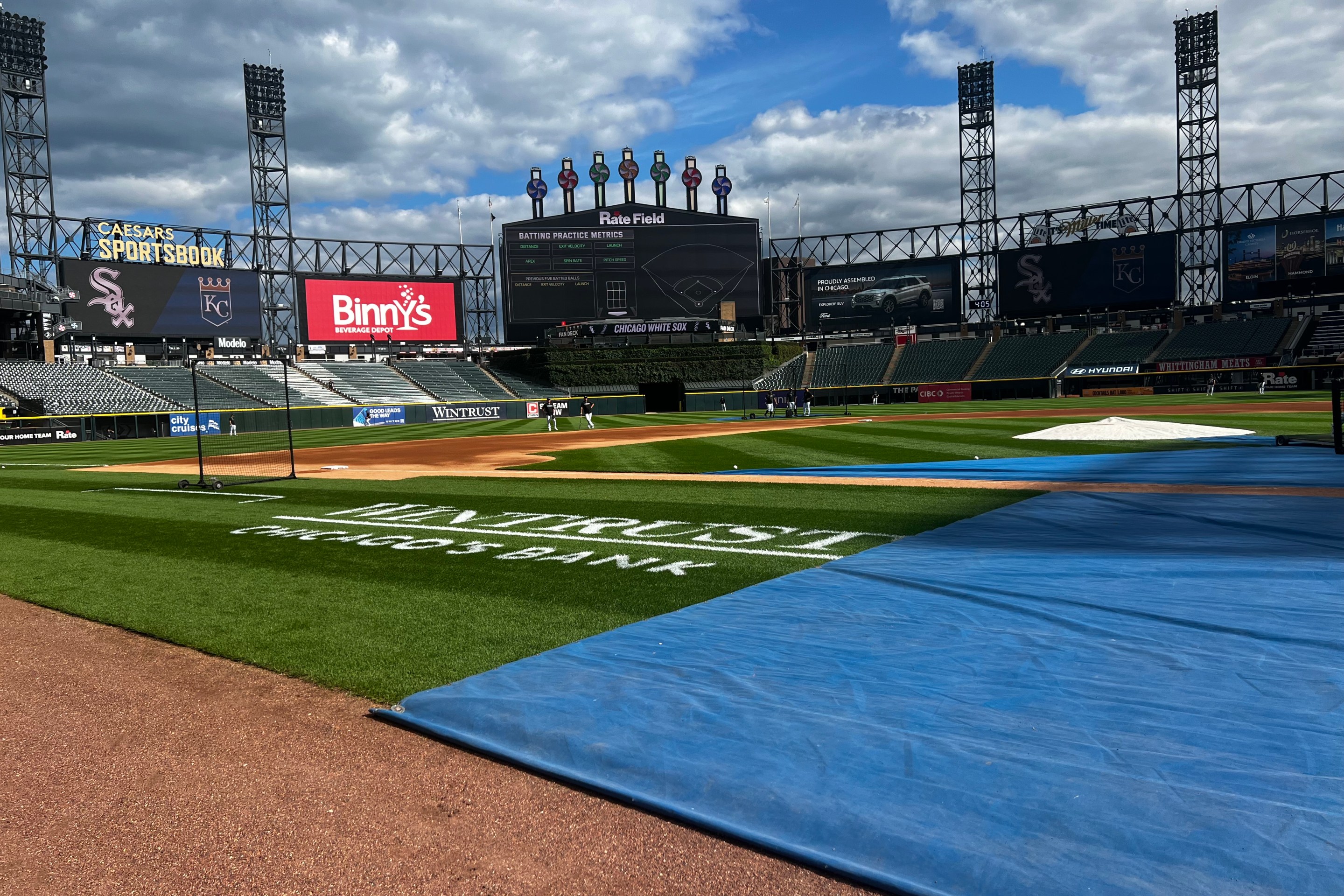If you had to list the reasons why the White Sox dramatically underperformed expectations in 2022, the mind first turns to team health, and the baffling mismanagement of it throughout the season.
But even if the White Sox didn't lose Tim Anderson, Eloy Jiménez, Yasmani Grandal and Luis Robert for large chunks of the schedule, the White Sox still might've faced an uphill battle with meeting projections, because the baseball betrayed the way they were built.
A lineup with plenty of all-fields power saw decreased utility in two-thirds of it. The ball just didn't fly, and it particularly sagged in distance to center field and right. A lot of hitters, White Sox and otherwise, griped about it throughout the year, and Alex Speier of the Boston Globe circled back to the topic to do a year-end assessment:
Barreled balls (defined by MLB.com as balls hit 98-plus miles per hour at a launch angle that typically yields an extra-base hit) to the pull side saw a slight drop in the frequency with which they left the yard. In 2019, a pulled barrel resulted in a homer 74.3 percent of the time; in 2022, that was down to 65.7 percent.
But to center and the opposite field, the decline was profound. Barreled balls turned into homers with roughly 31 percent less frequency when hit to straightaway center, and with 29 percent less frequency when hit to the opposite field.
The White Sox suffered a similar drop to center field...
- 2019: 120 straightaway barrels, 54 homers
- 2021: 132 straightaway barrels, 52 homers
- 2022: 144 straightaway barrels, 41 homers
... and the opposite way:
- 2019: 61 opposite-field barrels, 31 homers
- 2021: 58 opposite-field barrels, 27 homers
- 2022: 63 opposite-field barrels, 19 homers
The average White Sox fly ball on barrels flew five feet shorter to center, and seven feet shorter the opposite way. José Abreu lost 500 points of slugging on barrels to center and right, while Tim Anderson, Luis Robert and Eloy Jiménez suffered even bigger drops, albeit in considerably smaller samples.
Yasmani Grandal had the goofiest drop of all -- from a 3.143 slugging percentage on barrelled straightaway and opposite-field flies in 2021 to a .667 SLG in 2022 -- although between his pull-happy approach and problems with his legs and back, he only had six such barrels all year.
That paragraph backs into one of the few reasons to feel encouraged about Grandal's potential contributions in 2023. The White Sox were bottom-five in pull-field fly balls while dealing with drastically diminishing returns on what they considered a strength, and while Grandal has his hands full in getting healthy and fighting the aging process behind the plate, he doesn't have to tinker with his approach in any way. Hell, with radical infield shifts being banned, he'll be encouraged to lean into it.
If you're thinking regression will set in at some point, the executives cited in Speier's story don't sound optimistic:
“If you’re sitting there and planning your club, you’re thinking, ‘Gee, the ball doesn’t travel like it used to, so how am I going to play this?’ “ said Phillies president of baseball operations Dave Dombrowski, citing Nick Castellanos, who went from 34 homers in 2021 to 13 in 2022, as a player whose numbers didn’t align with his quality of contact.
“We’re all getting whipsawed by this,” said another GM. “We’re all trying to figure this out. We’re not used to that. There was a long period where it felt pretty stable. Now it doesn’t feel stable. You’re always trying to evaluate players in the context of what’s going on. That’s become really [expletive] hard.”
I'm looking forward to seeing whether the White Sox will attempt to steer away at this, because all-fields power is something they've stressed as an organization. In James Fegan's roundup of five noteworthy position player prospects back in June, Chris Getz cited opposite-field gap power for three of them:
"[Bryan Ramos] has a tendency to want to move a little too quick, and try to get the barrel out and turn left. When he squares up a ball to right-center, it is loud. So really it’s about harping that same approach that we’ve been talking about, whether it be with Lenyn Sosa or Colson Montgomery, that center to right-center gap, because he’s got plenty of strength to take to the pull side, he doesn’t need to try to drive the ball to the pull side, that can naturally happen. And with that approach, it allows him to stay on sliders, hard sliders down on the way out of the zone, to be able to shut down those pitches and drive the ones that are hanging.”
That all sounds good in theory, but it's playing out rather differently in practice, so much so that 17 homers was good enough to lead the team in 2022. The problem extends beyond Frank Menechino, and it's why I'm suspicious of the idea of promoting Chris Johnson from Charlotte to replace him.
But it's also why I'm looking forward to hearing from Mike Tosar, if and when the White Sox make his apparent hiring official. He was credited with helping Jorge Soler and Salvador Perez with their transformation into league-leading home run hitters, and while Soler's 48-homer season is partially a product of 2019's happy fun ball -- remember the Bomba Squad Twins? -- Perez's surge occurred in a saner environment.
If Tosar is indeed aboard to roll up his sleeves and get to work with White Sox hitters, then that's one step in trying to back out of a dead end the White Sox's GPS didn't tell them was coming. Which players stay, which players go, and which ones arrive may be evidence of further recalculations.






